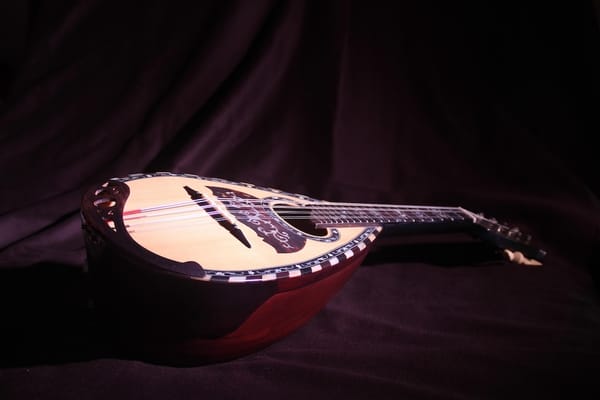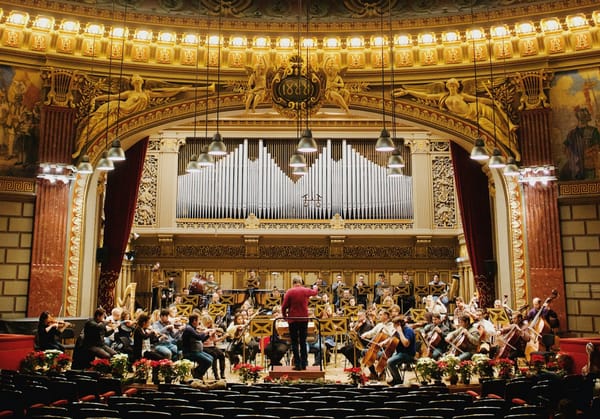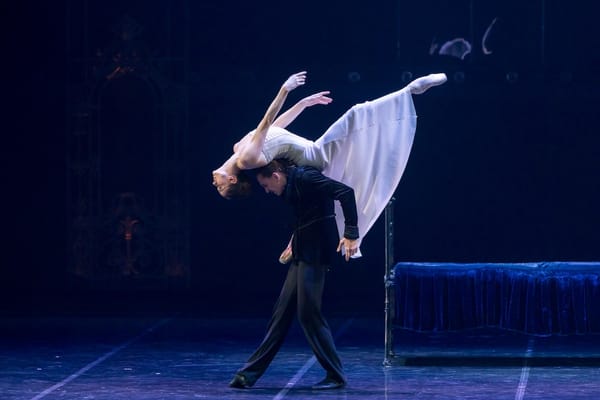The 10 Easiest Classical Pieces Every New Listener Should Hear
Discover ten timeless works that open the door to classical music. From Mozart’s sparkle to Debussy’s moonlit calm, these accessible pieces prove that classical music is not elite—it’s deeply human and beautifully approachable.

For many, classical music feels like an intimidating world—filled with complex symphonies, obscure terminology, and centuries of history to navigate. Yet, at its heart, it’s simply about emotion, beauty, and storytelling through sound. The best way to enter this world isn’t through theory books or concert halls, but by listening to pieces that are immediately accessible and emotionally direct.
Here are ten works that open the door to classical music with grace, warmth, and instant appeal.
1. Ludwig van Beethoven – Symphony No. 6 “Pastoral” (Movement I)
Beethoven’s Pastoral Symphony paints an idyllic picture of the countryside. The opening movement, Awakening of Cheerful Feelings upon Arrival in the Countryside, overflows with optimism. You can almost hear the rustle of trees, the murmur of a brook, and birdsong in the strings and woodwinds.
Unlike Beethoven’s stormy Fifth Symphony, the Pastoral is gentle, lyrical, and easy to follow. It’s an excellent introduction to how orchestral music can tell a story without words—inviting the listener into nature itself.
2. Wolfgang Amadeus Mozart – Eine kleine Nachtmusik (A Little Night Music)
Mozart’s Eine kleine Nachtmusik is one of the most recognisable pieces in all of classical music—and for good reason. It’s bright, tuneful, and bursting with joy.
Composed in 1787, this serenade was meant for social occasions, and it retains that sense of effortless charm. Its first movement, with its instantly memorable opening phrase, makes listeners feel right at home. Even if you’ve never listened to Mozart before, you’ll understand the balance, wit, and elegance that made him a genius.
3. Johann Pachelbel – Canon in D
You’ve likely heard Pachelbel’s Canon in D at weddings, in films, or on countless playlists. Its slow-building structure, based on a repeating bass line (a “ground bass”), creates a hypnotic and harmonious effect.
The piece’s beauty lies in its simplicity: a few notes repeating and evolving in graceful patterns. It’s perfect for newcomers because it’s emotionally direct—calming, meditative, and endlessly satisfying.
4. Claude Debussy – Clair de lune
Few works capture serenity as perfectly as Debussy’s Clair de lune (“Moonlight”). Written for solo piano, it’s a dreamlike exploration of sound and space.
Debussy was a master of “musical impressionism,” painting scenes with shifting harmonies instead of bold lines. Clair de lune doesn’t demand analysis; it invites you to float. Its soft dynamics and gentle ebb and flow make it ideal for late-night listening—a work that seems to suspend time.
5. Antonio Vivaldi – The Four Seasons: Spring
Vivaldi’s Four Seasons are among the most vivid programmatic works ever written. Spring, the first of the four concertos, bursts with energy and optimism. Violins mimic birds singing, brooks babbling, and storms passing.
It’s both descriptive and exhilarating, making it a perfect gateway into Baroque music. The rhythmic vitality, bright tonality, and clear structure give listeners something to hold onto, even if they’ve never heard a concerto before.
6. Pyotr Ilyich Tchaikovsky – Nutcracker Suite
Tchaikovsky’s Nutcracker is technically a ballet, but its Suite—a concert version featuring highlights like the Dance of the Sugar Plum Fairy and Waltz of the Flowers—has become a standalone favourite.
Every movement offers a different mood: delicate, whimsical, or grand. Tchaikovsky’s gift for melody ensures instant accessibility. It’s one of those rare classical works that appeals equally to children and adults.
If you want to understand how orchestral colour can evoke fantasy and wonder, start here.
7. Johann Sebastian Bach – Air on the G String
Bach’s music can seem mathematically perfect, but Air on the G String shows his profoundly human side. The melody unfolds slowly and smoothly, floating over a steady bass line.
It’s a masterclass in restraint and balance—serene but deeply emotional. Many listeners find it meditative, almost spiritual. This piece demonstrates that Bach’s genius lies not in complexity, but in the purity of expression.
8. Franz Schubert – Ave Maria
Schubert’s Ave Maria has transcended the concert hall to become a universal symbol of grace and devotion. Written for voice and piano, it’s a setting of a simple prayer that feels both sacred and deeply personal.
The melody rises and falls with tender inevitability, conveying comfort and peace. It’s often performed by sopranos or tenors, but even instrumental versions retain its emotional weight. A perfect example of how classical music can touch the soul directly, without need for context.
9. Edvard Grieg – Morning Mood from Peer Gynt
If you’ve ever watched a sunrise scene in film or television, you’ve probably heard Grieg’s Morning Mood. This orchestral miniature begins quietly, with flutes and oboes depicting dawn’s first light, and gradually builds to a radiant climax.
It’s accessible because it’s visual—you can see the music unfolding. Grieg’s melodies are instantly memorable and evoke the natural beauty of his native Norway. It’s a perfect piece for those discovering how classical music can paint images in sound.
10. Georges Bizet – Carmen Suite: Habanera
For a touch of drama and passion, Bizet’s Habanera from Carmen is irresistible. The smoky rhythm and sensuous melody capture the spirit of the opera’s heroine—a woman as independent as she is doomed.
Even out of context, the piece’s sultry rhythm (borrowed from a Cuban dance) feels modern and relatable. It’s short, fiery, and immediately captivating—ideal for listeners who want to experience the theatrical side of classical music.
Why These Pieces Work for Beginners
Classical music spans over a thousand years and countless styles, but these ten pieces share key traits that make them especially welcoming to new ears:
- Melodic Clarity: Each work features memorable, singable melodies that stick in your head after one listen.
- Emotional Directness: They convey feelings—joy, peace, wonder, or drama—without requiring technical knowledge.
- Moderate Length: None overstay their welcome; most are under ten minutes.
- Cultural Familiarity: Many have appeared in films, advertisements, or popular culture, making them feel comfortingly familiar.
- Variety: Together they showcase a range of moods and styles—Baroque order, Classical elegance, Romantic passion, and Impressionist colour.
How to Listen
If you’re new to classical music, don’t worry about identifying instruments or analysing form. The best approach is simple: listen with curiosity.
- Start small: Choose one piece at a time and play it in a quiet setting.
- Notice emotions: What does it make you feel? Calm? Energised? Nostalgic?
- Try different versions: For instance, listen to Clair de lune by different pianists—you’ll begin to hear how interpretation shapes the experience.
- Create associations: Pair Vivaldi’s Spring with a morning walk or Bach’s Air with evening reflection.
- Attend live concerts: Even a short performance can deepen your connection to the music’s physical power.
Beyond the Basics
Once these works feel familiar, you might venture into slightly deeper waters: Beethoven’s Moonlight Sonata, Dvořák’s New World Symphony, or Chopin’s Nocturnes. The beauty of classical music is that it rewards repeated listening—the more you return to it, the more you discover.
But remember, every seasoned listener once began somewhere. These ten pieces aren’t just “easy”—they’re enduring for a reason. They continue to enchant new audiences precisely because they speak a universal musical language: one of beauty, emotion, and timeless humanity.





